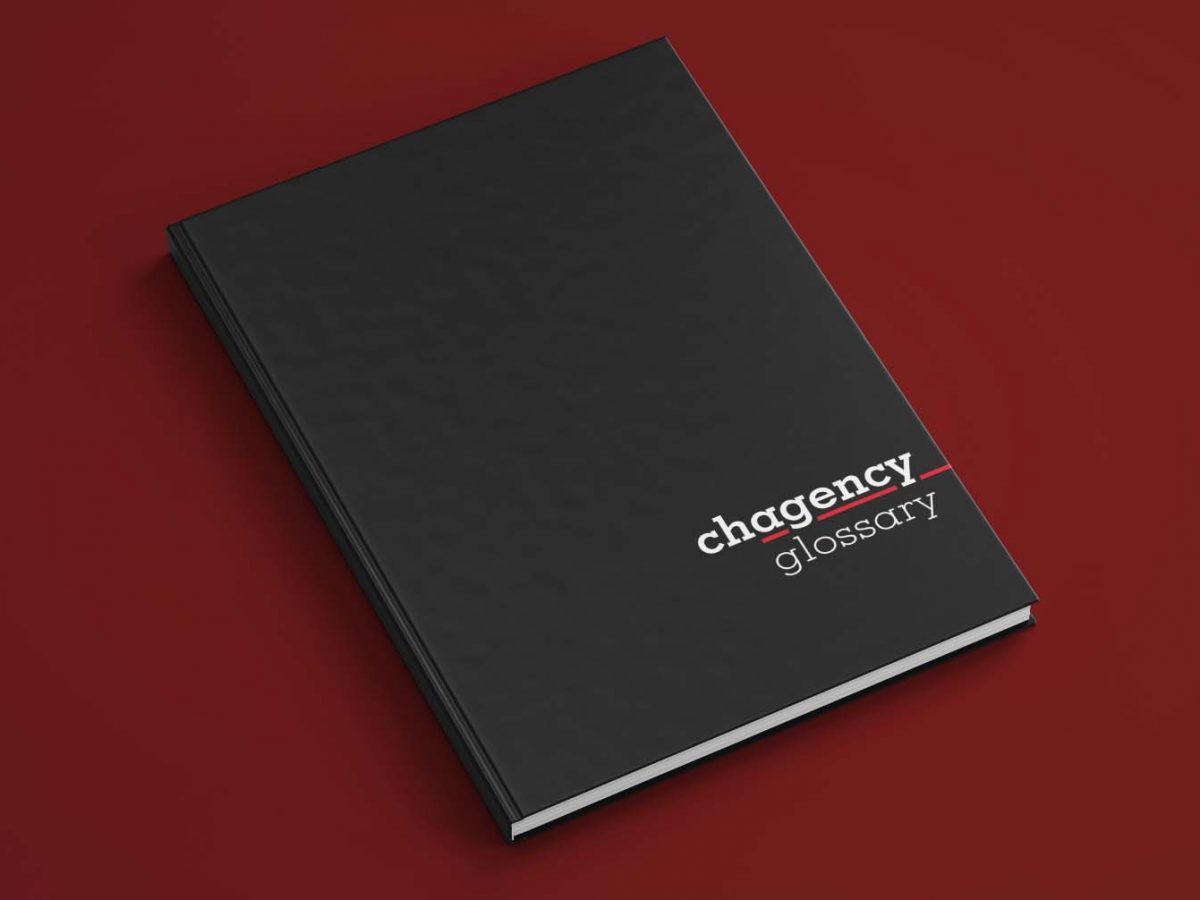Here’s a list of the words this blog uses and their explanation. Some of them are coined by chagency_ and some of them have meaning in context. This document is continuously updated.
Experience
/ɪkˈspɪərɪəns,ɛkˈspɪərɪəns/
the reverse-engineering of the totality of features, content and stimuli that a user submerges itself into, which results in:
1. them manifesting a variety of feelings towards the company/product
2. adding to the process of brand equity building
3. keeping users engaged into the created realm.
Elegant Simplicity
The fine line between too much and too generic. The balance between special and uncomplicated.
See this article for a more in-depth explanation.
We’re also covering a category “simplicity”.
Consentful Control
Users give you permission to be guided throughout your product or to simply play by the house’s rules – be it
- Twitter’s 280 characters limit (incentivises quick, easily digestible content)
- Snapchat’s (up to) 10 seconds life content (incentivises privacy, or at least used to)
- Apple calling its specially-trained employees “Geniuses” and the tech support station “Genius Bar” — incentivises expertise recognition
- Milk and bread being put in the opposite corner of the entrance of a supermarket — incentivises the customer to go through a high number of sections
User Immersion
What any experience should be aiming for. When a user is immersed, they’re probably deploying more than one sense into what was prepared for them.
They’re focusing on the experience and, depending on their personality, will isolate their awareness from the outer world more or less. It draws the most part of their attention and they don’t “buy into” the story given. They are part of it — could lead to an echo chamber among the groups of people developed around the experience.
The process of peer-sharing is a side-effect of them being immersed. That happens thanks to a base of utilitarian value but what springboards that is the mix of simplicity, beautiful looks and social value (social proof, co-op factor, validation bias etc.)
On a darker note, if we were to compare the company to a cult, an immersed user would be their acolyte (that’s an extreme example though). Wherever they see adverts, social media mentions or simply their product, they’re drawn onto them like a magnet — that’s a side-effect of proper equity building.
On the B2B side, effects are of a lesser degree given the audience. However, user immersion can exist in a way that still captures their senses and deploys the social value dimension, minus the acolyte bit.
Examples:
- Apple — people camping in tents for days in order to buy their products
- Supreme in the fashion industry — same queues as Apple but to a lesser degree
- Adidas/Nike — fist fights starting at sneaker releases
- Intercom — the business-to-consumer chatting standard
- Zoom — webinars, virtual events, business video call standard
- Adobe — the full toolbox for creatives
- Stripe — go-to payment processor, stress-proof and bullshit-free
- MailChimp
- WeTransfer
- Amazon’s Alexa
Religions…?Hey, we don’t wanna get into that
Brand Equity Building
The totality of side-effects of all design decisions that waterfall into the image of the company. The value of said brand (can be a personal brand as well).
In other words, the discussion you’ve had more than once with your peers about “What makes you buy Nike” or something similar.
By far the #1 way to build Brand Equity is through an experience.
Utilitarian Value
I’m definitely not delving into philosophy now, it’s not a matter of utilitarianism.
What I mean by that is simply what importance/usefulness/practical output you get out of using a certain product/service. That is, without anything “fancy” added on top.
Fancy could include things like logo, branding, visual identity, advertising, influencer marketing, social media marketing, content marketing etc.
In simpler terms: what do I get out of using what you provide, despite the story or mental concepts associated with your product.
If I were to look at what a certain type of lipstick does — it temporarily colours the wearer’s lips in a certain shade. The fact that it’s Tom Ford, Balmain or YSL, that X wore it and I’ve seen it on three adverts is the story.
The Angel Salesman
One of these people who, while still in their company’s service, make you somehow save money or bring any kind of benefit, even if it’s at the expense of their own profits.
These people are aware that your satisfaction will make you maybe do more business with them but more importantly, you’ll become a golden mouth for them.
Golden Mouth
As a consequence of extraordinary customer service, a person recommends your company/product to other people, so as to return the kindness. That can happen even if the two were not engaged in a paid transaction.
An example is the following Reddit comment:
“I have dealt with Enterprise. They are very helpful, and even suggested ways in which I could create my own records so as to save myself money and pay them less. How’s that for service?”
For context, the post was about recommended firms claiming expertise in cryptocurrencies from the UK.
Further reading about this word: here and here
The Dishonest Salesman / The Con Artist Salesman
The salesman you’ve surely encountered somewhere along your life that “conned” you into buying/signing up for something, only to have you feel somehow tricked, at a later point. That causes two reactions:
One, it made you feel like you were conned because it helped the seller more than it helped you.
Two, it started building what’s called buyer’s resistance. After encounters like these, it just so happens that you feel like someone is cold selling you something, you’re hesitant to listen to them.
Buyer’s resistance is a natural instinct that’s engraved after interactions like these. And due to the current state of the world, we all more or less have it. However, with the new business model that’s being “forced” upon us, this will change.
Conversion
A user’s change from one state to another. States:
1. Hypersoft Conversion
A subscription to a free plan. A change from “website visitor” to “subscribed”. ROI is not shown in the short-term.
2. Soft Conversion
A subscription to a paid plan. The most common type of conversion. However, this doesn’t show any long-term commitment between the user and the product/company.
3. Hard Conversion
Users who have either subscribed yearly (as opposed to monthly) or have declared “loyalty” in another form. The 5th consecutive recurring payment would signal of a stable relationship, though it varies by industry.
4. Hyperhard Conversion
Users who are committing to a long-term contract or are moving to your most expensive plan for a long period of time.
Attention Coins
A way to metaphorically quantify a person’s limited attention span. Every second, products fight to get as much of our attention coins as possible. An advert that we overlook in a feed takes very little of our attention coins. If we are to scroll back to have a double look, that moves our attention-coin spend from very low to low-medium.
Attention coins cost. The bigger a banner is, the more it will cost — but the more of a chance it will have for our attention coins.
Attention coins are also a mix of 1) “real estate” — whether it’s a display or physical — and 2) relevancy to the end user. Hence the new advertising world lies in Social Media
Golden Mouth (Golden Voice)
The source of an event where word of mouth marketing is arising. The golden mouth/voice is that of a user who recommends the product to someone else, which comes as a result of any of the following in combination:
- Utility
- Relevancy to their interest profile
- Adherence to the mission and/or vision of the product/company
Brand Evangelist
A repeated golden voice. This person has adhered to the movement/mission/vision of the product and/or company. Thus, they are propagating the actions of the company, spreading its message.
Naturally, it’s very hard to attain brand evangelists and that can only come as a side-effect of
- Utilitarian value
- Positioning that results into creating an experience.



